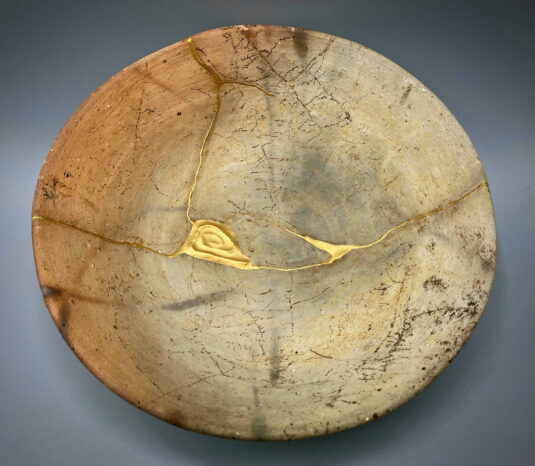
Beautifully Broken: Kintsugi by Naoko Fukumaru
Nikkei National Museum & Cultural Centre, Burnaby, BC - To Feb 21, 2026
Kintsugi is the 500-year-old Japanese technique that combines urushi lacquer and powdered gold in the repair of broken ceramics. Though the purpose of kintsugi is the return of an object to its original form or function, the art lies not in the erasure of the break but in its promotion—a historical monument that adds to an object in the same way the mender joins the maker as collaborator. Metaphors abound, particularly at a time when recycling and repurposing constitute an existential necessity. For Naoko Fukumaru,
kintsugi can be a point of departure.
Born in Kyoto, Japan, to a third-generation antique auction house family, Fukumaru grew up with stories of a great-grandfather who collected broken objects by wheelbarrow and repaired them at home. From an early age, Fukumaru too began collecting and experimenting with broken objects, eventually graduating from West Dean College’s Ceramics, Glass and Related Materials Conservation and Restoration program before embarking on a successful career as a museum conservator. As an artist, her work draws on Western conservation practices and kintsugi and decorative maki-e techniques, yet it is uniquely her own.
An exemplary piece from Fukumaru’s latest body of work is Born This Way (2024). Here, two celadon ceramic bowls, each displaying signs of unattended breaks and kintsugi repair, are brought together in a partial “spooning” formation. The unifying medium, as it were, is a row of unglazed ceramic flowers of various sizes, the largest overtop the edge of the outer bowl. Prior to the floral motif, Fukumaru often adorned her broken/repaired pots with barnacles, which, among other wonders, are known for secreting an extraordinarily strong, fast-curing cement.

